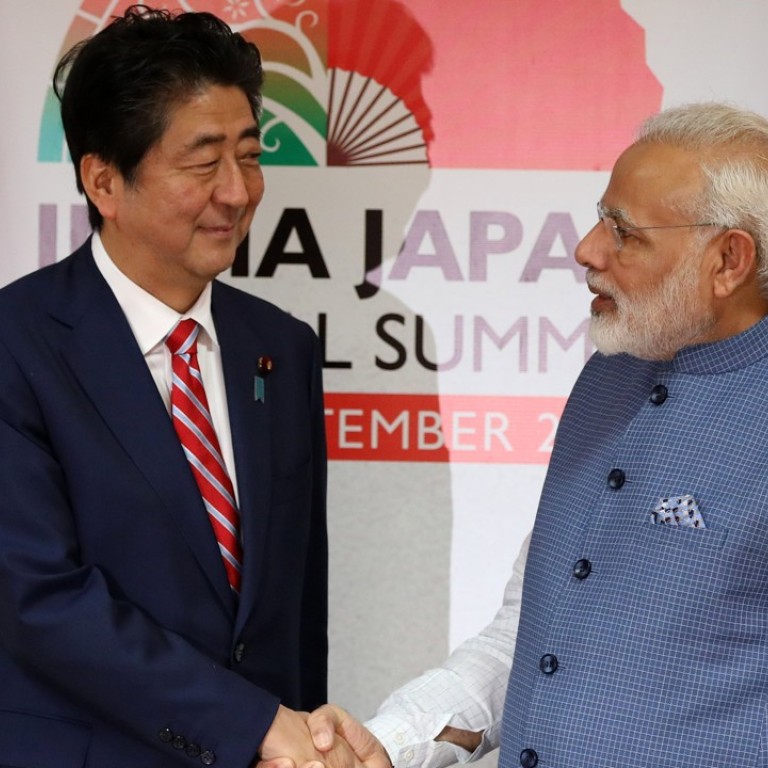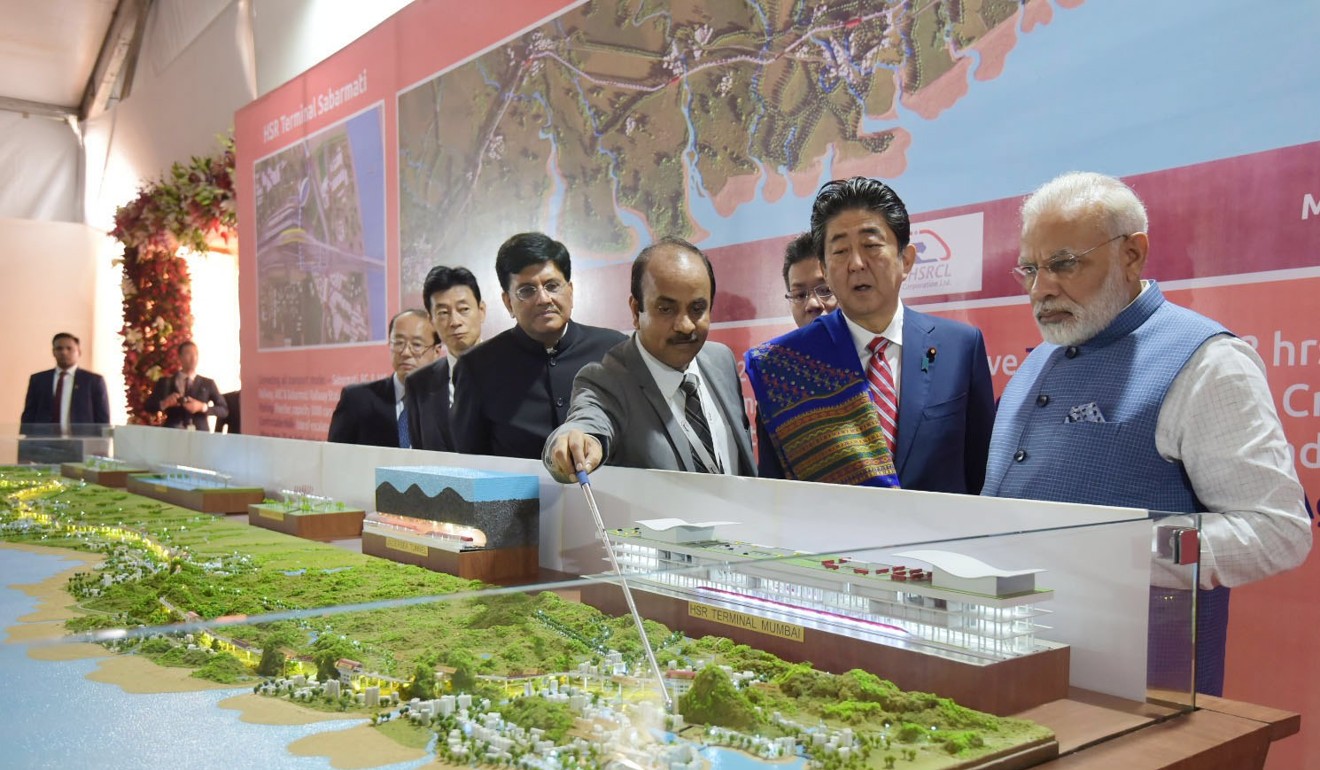
India and Japan forge closer ties by starting work on high-speed rail project during Shinzo Abe’s visit
Talks between Modi and Abe are expected to focus on security at a time when both countries share security concerns about a rising China
Japan’s Prime Minister Shinzo Abe on Thursday inaugurated India’s first bullet train project – a US$19 billion line in the home state of Indian leader Narendra Modi intended to revitalise the country’s vast but dilapidated network.
The initiative is seen as emblematic of fast warming relations between New Delhi and Tokyo, who are seeking to combat China’s growing influence. It is also a new beginning for a rail transport system plagued by accidents and chronic delays.
The line, using Japanese trains and technology, will link Ahmadabad to India’s financial capital Mumbai and is scheduled for completion by the end of 2023.
The 500km journey will be cut from eight hours now to just over two hours when services start.
“I hope to enjoy the beauty of India through the windows of the bullet train with Modi on my side when I come to India in a few years,” Abe told a ceremony in Ahmadabad. “It marks the beginning of a new chapter in ties between India and Japan.”
The Indo-Japan relationship is not just about bilateral trade. It has developed into a strategic and global partnership
Abe’s visit comes just after a border stand-off between India and China in a disputed and strategically important Himalayan area. The two prime ministers both hailed the strengthened ties between their countries.
“The Indo-Japan relationship is not just about bilateral trade. It has developed into a strategic and global partnership in the Indian-Pacific region,” said Abe.
Modi has pledged to invest billions of dollars to modernise India’s creaking railway system that remains the main form of travel for millions. The bullet train is one of his pet projects.
“Today India has taken a giant step in fulfilling a long cherished dream,” Modi said to loud cheers from the audience. “The bullet train project will bring great speed, great development and great technology to the country.”
The new train with a capacity to carry 750 passengers is a bright spot for the world’s fourth-largest network by track length. Much of it dates from the British colonial era however.
More than 22 million passengers commute daily on some 9,000 trains across the network despite frequent accidents and delays.
Trail derailments have already killed more than 200 people this year, including one last month in which 23 died in northern Uttar Pradesh state.
Japan is a pioneer in high-speed rail networks and the project is a joint venture between Indian Railways and Japan’s Shinkansen Technology.
Japan proudly hails its ultra-efficient Shinkansen for its punctuality and zero-accident record.
The train has a top speed of up to 350km/h – more than double the maximum speed of the fastest ones operating in India.

Japan, which is providing 85 per cent of the cost of the new train link in soft loans, will also facilitate transfer of technology through training of local engineers.
The two leaders are also tipped to sign several bilateral agreements at the annual India-Japan summit later on Thursday.
Local media reports said Japan was likely to take up the sale of ShinMaywa US-2 amphibious aircraft that India has been interested in for several years.
The aircraft is expected to boost India’s maritime capabilities against a more assertive China.
On Wednesday, Modi welcomed Abe at the airport with his traditional big hug before the Japanese premier and his wife changed into Indian dress.
The leaders are known to share personal camaraderie that has accelerated crucial ties between two of Asia’s biggest democracies.

.png?itok=arIb17P0)